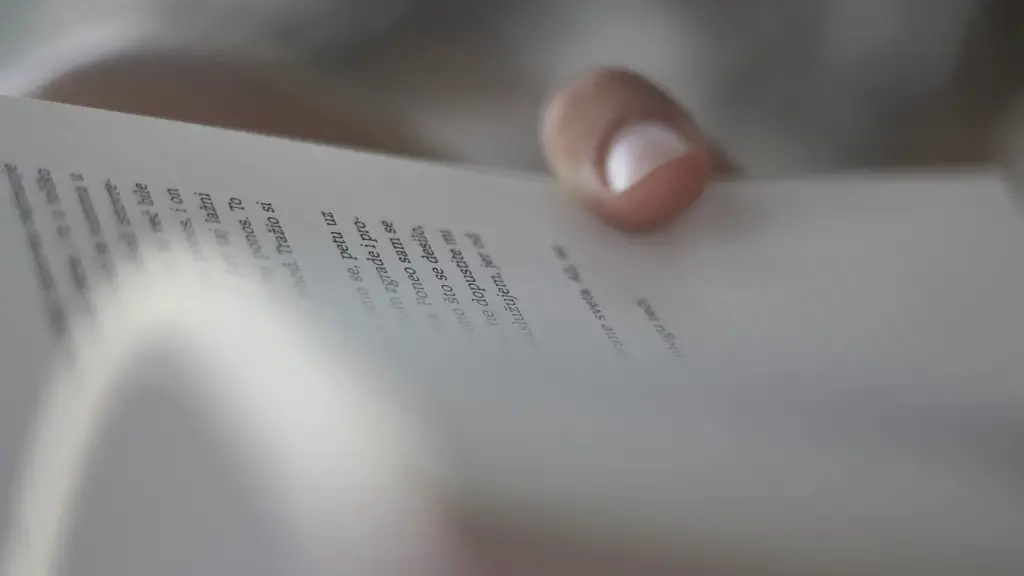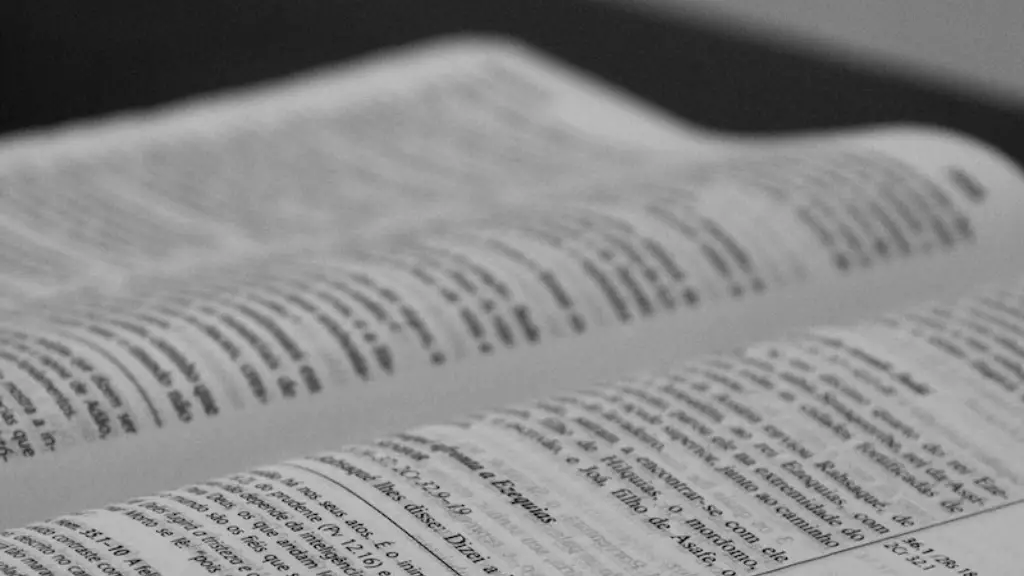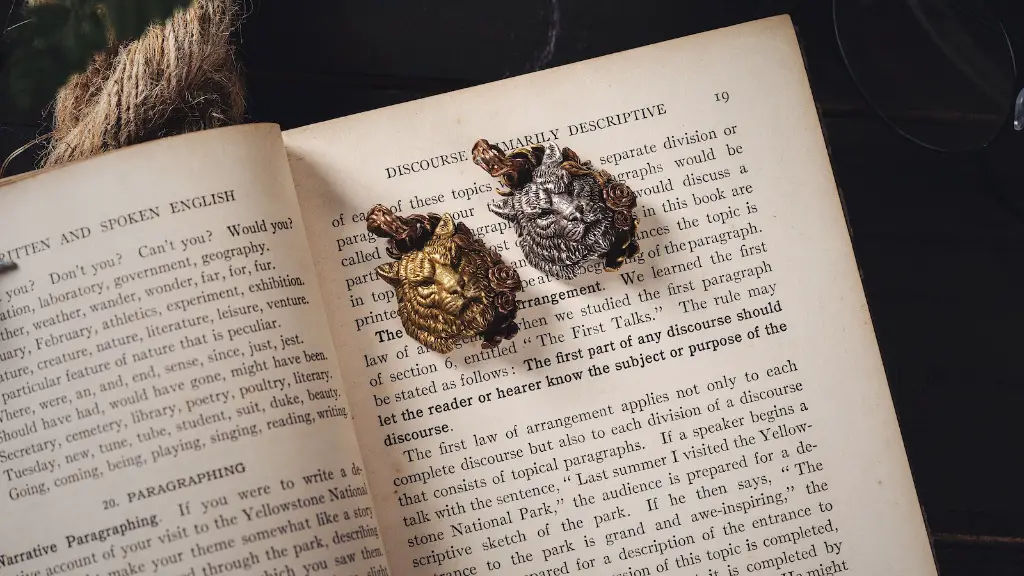Introduction
Many people view poetry as an intimidating form of literature. The truth is that with a few simple steps, anyone can learn to read a poem like a professor. In How to Read Poetry Like a Professor, by Thomas C. Foster, the author presents readers with an approachable way of understanding poetic passages. This article will delve into the various themes of How to Read Poetry Like a Professor, summarizing the content and exploring the salient points.
Chapter Summaries
Foster starts by breaking down the two common types of poetic devices, including the technical and the figurative. Technical devices involve meaning, structure, and sound, while the figurative focuses more on metaphor, irony, and symbolism. By understanding the distinctions between the two, Foster believes that it is easier to both grasp poetry and also uncover the poet’s intentions.
In the second chapter, Foster discusses the importance of having a “poet’s eye” for understanding the techniques used in poetry. As with any other skill, it takes practice and understanding of the underlying elements to properly become adept at reading poetry. To do this, Foster believes that one must be aware of cues from the poet, such as meter and rhyme, which help to build context and add meaning to the poem.
The third chapter is devoted to helping readers understand the use of language in poetry. Foster covers commonly used poetic devices like alliteration, puns, and other literary elements that can add nuance to a poem. Through carefully studying which words are emphasized, readers can gain a better understanding of the poet’s viewpoint and intentions.
Foster delves into the importance of theme in the fourth chapter. He stresses how a poem’s theme may be conveyed by its title, but this is not always the case. Examining the poem’s structure, diction, and form can help the reader better decipher the theme in question.
In the fifth chapter, Foster explains the use of repetition in poetry and its effect on the text. poems often employ repetition to make a point or provide a structure to hang the other elements on. Re-readings of the text and returning to literary devices used in the poem can help provide further insight into its meaning.
The sixth chapter encourages readers to connect with the poet through the poem. Foster argues that if readers can relate to the poet, it is easier to understand the intent behind their work. By becoming familiar with the particular elements of a poem’s structure, readers can better appreciate the artistry behind poetry and also arrive at a deeper understanding of its contents.
The final chapter of Foster’s work discusses the biographical aspects of reading poetry. He suggests that by examining the life of a poet, one can get deeper insight into the meaning of a poem and its structure. This makes it easier to appreciate the complexities of the poem and gain a better overall grasp of the poet’s motivations.
Context of Reading Poetry
When discussing how to read poetry, it is important to consider the context in which the poem was written. By closely examining the context of a poem, readers can gain an understanding of the wider implications of the poem and its purpose.For instance, poems written during a particular time period may be reflecting the feelings and thoughts of the people who experienced it. By looking into the historical context and events of the era, as well as the poet’s own perspective, readers can better understand the full breadth of the poem’s meaning.
Approaching Poetry Critically
When reading any poem, it is important for readers to approach the text with a critical eye. By breaking down the poem’s structure and elements, one can better understand the techniques of the poet and their intent. Closely examining the poet’s use of language, imagery, symbols, and other literary devices can help to illuminate the core of the work and its meaning.
For instance, paying attention to enjambment and the relationship between lines can help readers gain a greater understanding of the poem’s structure and direction. Similarly, carefully examining the development of tone throughout a poem can help uncover the mood and theme of the work.
Exploring Poetry in the Current World
In the modern age, poetry is experiencing a resurgence in popularity. Digital platforms and poetry slams have made poetry more accessible to larger audiences, contributing to the growth of interest regarding the art form. As a result, poets are exploring new techniques and methods of expression than ever before.
In today’s world, poetry is often used to express feelings of marginalization, provide insight into cultural issues, and serve as an outlet for generating dialogue and understanding. By scrutinizing the development of topical themes in poetry and analyzing poets’ use of language, readers can gain a better understanding of both the poet and the context in which the poem was written.
Deconstructing a Poem
Deconstructing a poem is an important step in thoroughly reading and understanding a work of poetry. By obtaining a clear sense of the poem’s structure, readers can gain insight into the poet’s intent and the significance behind the text. As Foster emphasizes, understanding the context of a poem is pivotal to unlocking its meaning.
After familiarizing oneself with the context of the poem, readers can move onto exploring other elements, such as the use of metaphor or alliteration. Analyzing the poet’s choice of words alongside their placement can give readers a better understanding of the sentiment behind the poem and the poet’s perspective. Through close corollary between the poet’s use of language, readers can discover the nuance of a poem and fully appreciate its depth.
Poetry as a Form of Self-Expression
Another important element of understanding poetry is recognizing how it is used as a tool for self-expression. Poetry has a unique ability to illustrate feelings and emotions that can’t be expressed in any other way. By closely examining the poet’s choice of words and the structure of the poem, readers can gain insight into the poet’s personal journey and their experiences.
Though understanding poetry can be a challenge, when done properly, readers can gain a greater appreciation for their own life experiences and how they may relate to the poet. In turn, readers may even find their experiences paralleling those of the poet, allowing for further connection with the text.
Breaking Down Diction
A poem’s diction, or choice of words and language, can often be the key to uncovering its true meaning. By examining the diction of a poem, readers can gain insight into its larger themes, as well as its emotional undertones. Paying attention to the diction of a poem can also help to further proficiency in understanding new and unfamiliar words.
Breaking down the syntax, or the way the poem is written, can also help to decipher a poem’s full meaning. The arrangement of words throughout the poem can point to more than just surface-level feelings and emotions, allowing readers to observe a poet’s innermost thoughts, as well as how they may relate to the poem’s theme.
Exploring Metaphor and Imagery
Another way to read poetry like a professor is to pay attention to the imagery and metaphors used throughout a poem. Imagery, the use of sensory-rich descriptions, and metaphors, comparisons between two unlike things, allow readers to explore the poem’s theme more deeply. By appreciating the poet’s use of imagery, readers can better understand the message of the poem.
In addition, it is important to recognize when and why the poet may have employed a particular metaphor or image. Paying attention to the relationship between the written text and the surrounding imagery can help readers uncover new aspects of the poem and draw further nuanced conclusions.
Conclusion
Foster’s book, How to Read Poetry Like a Professor, provides an accessible and encompassing pathway for readers to fully appreciate the written poetry. Through its step-by-step approach, readers can learn how to explore the core elements and hidden meanings in a poem. By familiarizing oneself with the two different types of poetic devices, poetic language, and the underlying elements that add context to the text, readers can gain a more complete understanding of the poem in question. This article has provided a summary of each of the chapters in Foster’s work and explored extra methods of reading poetry in order to gain a comprehensive appreciation of the art form.


